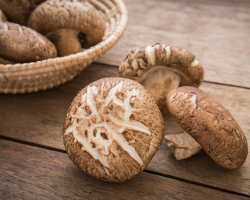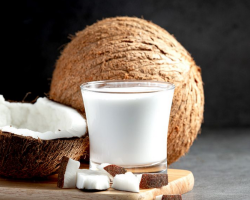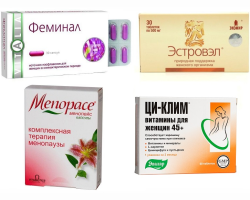From this article you will learn about the symptoms of chronic enteritis, as well as how to help yourself with exacerbation and pain in the intestine.
Content
- Chronic non-infectious, inactive, bacterial enteritis in an adult and a child-the history of the disease: symptoms, patient problems, MKB-10 code.
- Chronic cryptogenic, atrophic enteritis, nyak, Crohn's disease: what kind of illness, what is the connection?
- Acute enteritis, colitis - exacerbation: how to help yourself and get rid of intestinal pain?
- Pathogenesis, etiology of chronic enteritis: causes, what is detected?
- Signs of chronic enteritis
- Chronic intestinal enteritis in adults: treatment, clinical recommendations of doctors, drugs
- Chronic intestinal enteritis: complications
- Diagnosis of chronic intestinal enteritis: necessary measures
- Acute, chronic gastritis: symptoms, can chronic enteritis develop due to gastritis?
- Chronic cholecystitis, pancreatitis: symptoms, can chronic enteritis develop due to these diseases?
- Proper nutrition for chronic enteritis: diet, patient training, recommendations, adequate therapy for dysbiosis
- In chronic intestinal enteritis, which feces are noted: clinical description
- Nursing departure for chronic enteritis: Responsibilities
- Chronic enteritis: protocol, clinic, forecast
- Is chronic diarrhea a symptom of chronic enteritis?
- Prevention of chronic enteritis: Recommendations
- Chronic enteritis in dogs: symptoms
- Chronic enteritis: reviews
- Video: Enterocolite. Causes, symptoms, diagnosis and treatment of enterocolitis
The small intestine plays one of the main roles in the process of digestion. Any functional disorders of this intestinal department, as well as with the development of chronic diseases, are problems in the state of the whole organism as a whole.
Chronic enteritis causes a lot of inconvenience to the patient. To alleviate the condition, it is necessary to properly treat this pathology. Therefore, with the first symptoms of the disease, you need to contact a doctor. Read more about the causes, symptoms, treatment of chronic enteritis, read on.
Chronic non-infectious, inactive, bacterial enteritis in an adult and a child-the history of the disease: symptoms, patient problems, MKB-10 code.

Chronic non -infectious, inactive enteritis -complex and common gastrointestinal tract, which is subject to both children and adults. It is characterized by inflammation of the mucous membrane of the small intestine. What leads to a deterioration in his motor skills and makes it difficult to absorb nutrients into the blood. It is equally difficult and with similar symptoms proceeds both in adults and in children.
There are many causes of enteritis:
- Ulcer, gastritis
- Complications caused by taking medications
- Unstable nutrition, drinking alcohol and drugs
- The consequences of irradiation in oncology
Non -infectious enteritis, as a rule, it proceeds for a long time, progresses gradually, with short -term exacerbations, and gradually leads to atrophy of the intestinal walls. The disease in an adult and a child is accompanied by the following symptoms:
- Frequent urges for defecation, the process itself is accompanied by general weakness and trembling hands, rapid heartbeat.
- Stupid spasmodic pain in the lower and middle departments of the abdomen around the navel.
- Bitterness in the mouth and belching.
- Meteorism and rumbling in the abdomen, increased gas formation.
- Diarya alternates with constipation.
- Dyspepsic phenomena.
If such conditions are not treated, then the disease can gain a chronic form. A special diet is prescribed for the treatment of chronic enteritis - table number 4. Then add table number 4a And through 3 weeks - table number 4b. From drugs, antibiotics and steroid hormones are used. Read more about you can read the table of table No. 4 in the article on our website. It has useful information that will help you determine with the rules of such a diet, and also has a menu for a day, a week.
Bacterial enteritis It is caused by bacteria, viruses, salmonelles that enter the body with food or drink. Microbes settled in the small intestine and cause inflammation and swelling. Viral or bacterial enteritis is contagious. It spreads through close contact with infected people (for example, by joint consumption of food, water or cutlery) or by touching surfaces infected with an infected person.
With proper treatment, the prognosis for the patient is favorable. If the relapses of the disease become frequent, the loss of ability to work is possible. The code of the disease MKB-10-K50-K52. In the medical history, the doctor usually writes the following data:

Chronic cryptogenic, atrophic enteritis, nyak, Crohn's disease: what kind of illness, what is the connection?

Chronic inflammatory intestinal diseases mainly combine 2 diseases: non -specific ulcerative colitis and Crohn's disease. Some classifications add chronic enteritis to them as an independent pathology. What kind of illness - chronic cryptogenic, atrophic enteritis, Nyak and crohn's disease? What is their connection among themselves? Look for an answer below.
Chronic enteritis - This is a non -specific inflammatory disease of the wall of the small intestine, flowing for a long time with periods of remission and exacerbation. Dystrophic changes in the mucosa up to the atrophy of villi are attached to the signs of inflammation. General signs of the disease:
- Irritability
- Sleep disturbance
- Fatigue
- Various endocrinopathy
Both digestive and barrier, immunological, endocrine functions of the small intestine are disrupted. Cryptogenic is called enteritis of unclear etiology. This usually happens before making an accurate diagnosis. Atrophic is the doctors among themselves when the disease has long progressed and leads to disability of the patient. The most common reasons for diseases include:
- Bacterial
- Viral agents
- Frequent power disturbances
- Some drugs
Nonspecific ulcerative colitis (nyak) - damage to the mucous and submucosal layer of the large intestine, a chronic recurrent course. It is characterized by the formation of bleeding ulcers that do not heal for a very long time. Doctors consider autoimmune processes the cause of the disease. The main symptoms of the disease are:
- Painful sensations during defecation
- The chair is not very frequent
- If diarrhea is noted, then with blood and mucus
With colonoscopy, you can observe a swollen, inflamed mucous membrane, in places with bleeding ulcers. Often fibrous scars are formed at the site of ulcers.
Crohn's disease - The etiology of the disease is unknown, suggest the autoimmune nature of the disease.
- Pathology is characterized by the formation of granulomas (areas of specific inflammation), which are localized throughout the intestines (not only thick, but also thin).
- A characteristic feature is also a frequent formation of fistulas.
- On colonoscopy, you can detect a symptom of a "cobblestone": areas of a normal mucosa alternating with inflamed places.
What do these diseases have in common? This is the connection:
- Soreness in the abdomen
- Stool violations, diarrhea
- Pain for defecation
- Digestive disorders, and, as a result, weight loss, weakness
- Irritability
- If the diarrhea is very common, then dehydration is possible
With severe and prolonged course, malignancy is possible. As you can see, diseases are very similar, develop almost with the same symptoms, but only a diagnosis, and prescribe adequate treatment, can only a doctor.
Important: At the first unpleasant manifestations in the intestine, violation of the stool and the appearance of pain in the abdomen, urgently consult a doctor.
Acute enteritis, colitis - exacerbation: how to help yourself and get rid of intestinal pain?

Sudden cramping abdominal pain that occurs against the background of dyspepsia, frequent urge to defecate, liquid stool, fever - this is how the acute onset of inflammation or exacerbation of the small intestine - enteritis, colitis manifests itself.
To alleviate the condition and help yourself before the doctor arrives, you should fulfill the following:
- Can use antispasmodic drugs — Papaverine hydrochloride or nosh-pa. This is a safe way to remove the spastic state of the smooth muscles of the intestine, which is the main cause of pain in the intestine.
- Helps to reassure sharp pains warm heating pad. But many doctors do not recommend doing this. Indeed, if the cause of abdominal pain may be purulent inflammation of the appendix, then the warm heating pad provoke the perforation of its wall. This situation is complicated by peritonitis. Therefore, it is enough to take antispasmodics.
- To reduce the intensity of diarrhea, it is recommended to take activated carbon. It is taken based on the weight of the patient. The dose should be calculated like this - 1 tablet activated coal to one kilogram of weight of a patient with enteritis.
- If acute enteritis proceeds with temperature, then you must invite a doctor, and put the patient to bed.
If the cause of acute enteritis is a bacterial or viral infection, then the doctor will prescribe antibiotics effective against intestinal infection. It is necessary to do a feces analysis.
It is worth knowing: If the cause of enteritis is helminthic invasion, then helminths expose drugs such as Decaris and Vermox.
Since the digestive functions are impaired, so that there is no belching, heartburn and flatulence, enzyme preparations are given to the patient while eating, which help to split fats, proteins and food carbohydrates.
Pathogenesis, etiology of chronic enteritis: causes, what is detected?

The reasons for the development of chronic inflammatory processes in the small intestine include:
- Irregular diet
- Eating in dry, on the go, in a hurry
- Chronic intestinal overloads due to difficult to digested products
- Chronic constipation
- Haemorrhoids
- Polyps in the small intestine
- Non -derivation for a long time
- Infutable nutrition
- Chronic infections - syphilis, tuberculosis
- Stomach diseases - gastritis, ulcers
- Intoxication can also cause chronic colitis formation
Pathogenesis and etiology of the disease:
- Antacid state occurs due to the intestinal intestine insufficiently prepared food mass.
- This leads to irritation of the mucosa and determines the formation of chronic enteritis.
- Diseases of the small intestine can be the causes of lesions of other parts of the stomach and intestines, including the colon.
The inflammatory processes that arose in the small intestine change the environment, develop a microbial flora, which penetrated the small intestine from the lower parts of the intestinal tube.
Signs of chronic enteritis

The chronic course of inflammation of the small intestine is characterized by the frequency of exacerbation of the disease, depending on the dietary preferences of the patient. In the phase of remission, when the intestinal wall is in satisfactory condition, the patient does not complain and usually looks. Constant weakness, asthenic, pale skin may be noted.
If the disease is long -term in nature, then such manifestations of complications of chronic enteritis as osteoporosis are possible. In the acute phase of the disease, signs of digestive disorders are manifested:
- The swelling of the abdomen
- Flatulence
- Sensations of pain in the abdomen
- Frequent calls for defecation
Since digestive enzymes practically do not split food in the acute phase, and the mucous membrane does not fully perform the suction function and parietal digestion, feces, liquid feces, with an admixture of pieces of not completely digested protein foods, fats. The feces have a bright color of yellow shades, since the bile in chronic enteritis is released in small quantities and does not emulsize food fats. Related diseases - gastritis and cholecystitis can exacerbate into the acute phase of enteritis.
Chronic intestinal enteritis in adults: treatment, clinical recommendations of doctors, drugs

For the treatment of chronic intestinal enteritis in adults, a comprehensive approach with strict observance of the diet is needed. Such products are excluded:
- Sausage
- Salty, sharp, dishes
- Fat and fried food
- Raw fruit and vegetable dishes
It is recommended to use:
- Loof meat varieties
- Vegetable broth soups
- Steamed vegetables
- Curricular and other low -fat sour -milk products
Drug therapy - together with vitamins, drugs in the form of antibiotics are prescribed. To relieve pain and spasm in the stomach, you can drink No-shpu. The clinical recommendations of doctors are mainly aimed at compliance with therapeutic diet therapy, as well as at the conduct of a healthy lifestyle and taking the necessary drugs to combat infection, if the cause of enteritis was a bacterium or virus.
Chronic intestinal enteritis: complications

As a result of a violation of the digestion and absorption of nutrients, the inflamed mucous membrane of the wall of the small intestine, in the body of the patient with chronic enteritis, such disorders of the biochemical composition of organs and tissues occur, which lead to serious complications:
- Due to the violation of the absorption of calcium and phosphorus salts, the concentration of these substances in the blood is sharply reduced, the fragility of bone formations and cartilage is increased, and the deformation of the skeleton, and osteoporosis develops.
- Due to the insufficient intake of vitamins to organs and tissues, cardiovascular failure develops, bleeding increases, the skin becomes pigmented.
- There is a decrease in the products of vital hormonal substances that produce the pituitary gland, adrenal glands. The patient has asthenia, irritability, hypotension.
- If the underlying disease is not treated, then the inflammation of the overlying and underlying parts of the gastrointestinal tract joins chronic enteritis.
Enteritis is complicated by gastritis and colitis, inflammation develops in the liver and gall bladder.
Diagnosis of chronic intestinal enteritis: necessary measures

With timely seeking a doctor, the specialist conducts diagnostics for inflammation of the small intestine. Here are the necessary measures in case of suspicions of chronic enteritis:
- The doctor examines the patient, and if he sees bloating in the middle of the abdomen, he asks what complaints there are.
- At the same time, the patient indicates the presence of acute pain and flatulence after eating.
- On the palpation of the abdomen, signs of rumbling and splash in the area of \u200b\u200bthe cecum are manifested. The patient notes frequent urges for defecation and liquid fetid bowels.
- After the inspection, the therapist prescribes without fail a blood test - general clinical and biochemical.
- Another mandatory analysis in chronic enteritis is a coprogram or a comprehensive study of feces.
After the patient donated blood from the vein in the laboratory and brought the feces in the container for the study, the clinical laboratory diagnostics doctor conducts all the studies. Diagnosis "Chronic enteritis" It is placed if:
- In the coprogram, signs of not completely digested food were found.
- In a biochemical analysis, there are changes in electrolyte balance.
- There is a decrease in glucose and cholesterol.
- Protein metabolism indicators are reduced.
- In the general blood test, signs of anemia (low hemoglobin) were found.
With such research indicators, the doctor must prescribe effective therapy and a therapeutic diet to the patient.
Acute, chronic gastritis: symptoms, can chronic enteritis develop due to gastritis?

Acute, chronic gastritis - a disease characterized by inflammation, irritation or erosion of the gastric mucosa, which begins suddenly or develops gradually.
Symptoms of gastritis are diverse, but sometimes pathology occurs asymptomatic. The most commonly there are signs:
- Periodically occurring nausea
- Bloating
- Dyspepsic phenomena
- Stomach
- Hiccups
- Burning sensation in the stomach between meals or at night
- Reduction of appetite
- In the event of erosion of the mucosa, a black chair appears
Due to gastritis, chronic enteritis may develop if the disease is caused by a bacterial infection. Most often there is a gastroenteritis that affects the stomach and intestines. Here, common symptoms can be nausea and vomiting, but diarrhea is characteristic of enteritis.
Chronic cholecystitis, pancreatitis: symptoms, can chronic enteritis develop due to these diseases?

If the patient has such diagnoses as chronic cholecystitis or chronic pancreatitis, then as a result of pathological changes in the pancreas and gall bladder, acute or chronic enteritis develops. The main reasons that exacerbate this disease Gastrointestinal tract:
- Abuse fatty, smoked, salt food of meat origin.
- Violation of the regime Eating, snacks instead of a full breakfast, lunch and dinner.
- Uncontrolled alcohol consumption.
All these factors in a situation where a person is exposed to infectious agents (bacteria and viruses), significant psycho -emotional overloads, lead to inflammation in gall bladder and 12-first intestine. Read more:
- If the digestive juices of these internal organs are sharply different in composition and activity from normal indicators, then the food that enters the stomach through the esophagus, and then into the small intestine will not be treated with enzyme systems and components of bile.
- In normal condition when Gastrointestinal tract Healthy, it should be in the form of amino acids, monosachars and emulsified fat.
- The mucous membrane of the small intestine is not able to absorb large molecules and pieces of food.
- The contents of the intestine occurs, and the processes of decay of food begins.
- Pathogenic microorganisms enhance these negative factors for the health of the intestines. It turns out a vicious circle.
- Not completely digested food comes out of the rectum in the form of a liquid stool, pain receptors of the small intestine mucosa transmit signals to the surface of the abdomen.
So the picture of acute enteritis emerges. If chronic cholecystitis and chronic pancreatitis are not treated, then the acute form of inflammation of the small intestine passes irreversibly into chronic.
Proper nutrition for chronic enteritis: diet, patient training, recommendations, adequate therapy for dysbiosis

It was said above that the main treatment for chronic enteric, which gives the most effective result, is therapeutic diet therapy. Nutrition with inflammation of the small intestine should be both correct and full -fledged and high -calorie. The doctor must conduct a diet for the patient, give recommendations on nutrition and prescribe adequate therapy for dysbiosis. Dietary requirements are the following:
- Daily consumption of animal proteins in the form of meat, cottage cheese, fish and eggs - no less 150 grams per day.
- Daily consumption of vegetable and animal fats - no less 70 grams.
- The consumption of carbohydrates is necessarily limited, as they enhance the fermentation processes that occur in the acute phase of chronic enteritis.
- The vegetables that contain starch (potatoes) should be excluded from the patient's daily diet. In addition, all nightshade are excluded: tomatoes, pepper, eggplant, physalis and others.
- Vegetables must be served only in boiled form, otherwise not only fermentation in the intestines, but also motor activity will increase.
- It is forbidden to use raw fruits, legumes and prunes. You can baked apple.
- A mandatory element of daily nutrition on the table of such a patient should have cheese. This is the best source of mineral salts, phosphorus and calcium. In addition, real hard cheese helps in the digestive process.
- Drinks should contain tannins to stop severe diarrhea. It can be herbal infusions (oak bark, decoctions of dried pomegranate crusts, chamomile), decoctions, compotes and jelly from kizil, quince, blueberries.
- If the patient has no tendency to swelling, then one of the effective dietary recommendations is the use of table salt above the usual norm. Helps absorbing nutrients.
- It is necessary to avoid eating unprocessed foods. To spare the inflamed intestine, the patient should be given food in a wiped form.
- It is forbidden to introduce fried foods, smoking, whole milk, carbonated drinks into the dietary table.
This approach to the organization of the patient’s nutrition by chronic enteritis will not only calm the inflammatory process in the intestinal walls, but also help restore normal microflora if dysbiosis has already developed.
In chronic intestinal enteritis, which feces are noted: clinical description

As mentioned above, chronic enteritis is accompanied by frequent emptying of the intestine with liquid and mucous feces. Here is a clinical description of which feces are noted in chronic enteritis:
- It is usually painted in yellow or yellow-green color And have a sharp and fetid smell.
- Can be visually seen in feces remains of food, for example, with recent use of meat - its pieces.
- Fecal masses have fatty shine.
- The surface of the bowel movements it freezes quickly.
- If with chronic inflammation of the small intestine, the passage of feces on the large intestine slows down, then at the output the feces are decorated and has dark color.
- If fat is poorly digested in chronic enteritis, then feces - gray, clay -colored and very viscous.
In case of any suspicions of the development of intestinal pathology, you must immediately seek advice to the therapist.
Nursing departure for chronic enteritis: Responsibilities

Chronic enteritis can develop at any age. The patient can most often control his condition himself and follow the doctor's recommendations. However, in some cases, nursing care is required. For example, when chronic enteritis manifested itself in an elderly person, with memory problems, alzheimer's disease or Parkinsonwhich is characterized by forgetfulness and distraction.
Here are the responsibilities of the nurse in that case:
- In such cases, the nurse controls the time of medication and the dosage of the drugs taken.
- Following the diet, compliance with the requirements of the diet.
- During the period of exacerbation of chronic enteritis, the patient should not smoke and take alcohol.
- This is controlled by the ward nurse if the patient is in the hospital, or a hired nurse, if the patient is not hospitalized, and is at home in bed rest.
- The nurse controls sleep and wakefulness. It makes the weight of the patient's body weight.
If the patient needs to help with defecation, then the nurse serves the ship or helps the patient with restriction in movement to reach the toilet, celebrate the need and carry out hygienic treatment of the perineum and buttocks.
Chronic enteritis: protocol, clinic, forecast

In patients with chronic enteritis, there is: the severity, the feeling that the stomach is complete and now bursts after eating, a slight pain around the navel, which can manifest not only after eating. As mentioned above, due to the atony of the small intestine, the stomach swells, flatulence, nausea, sometimes vomiting, decreases or completely absent appetite appears.
Clinic of chronic enteritis According to the medical protocol:
After eating, the urge to the lower abdomen immediately occurs, the chair alternates with constipation and diarrhea (diarrhea is usually mixed with mucus).
During periods of frequent liquid stool Such unpleasant sensations appear:
- The body temperature rises
- Chills
- General weakness
- Malaise
- Fatigue
- Prostration
- Breakiness
- Irritability
- Headache
- With sharp movements, the head dizzy
- Sleep disappears at any time of the day
With visual inspection:
- The skin is very pale
- Covered by cold later
- Symptoms of hypovitaminosis are manifested
- Dry skin, rough
- Breed, relax or thicken nail plates
- White plaque on the language
- The stomach always put on like a ball
- A splash and rumbling are heard on the right side.
With a prolonged course of chronic enteritis, the total body weight decreases markedly. In a microscopic examination, there are drops of neutral fats, fatty acids, as well as muscle fiber. A hypotension hypotension is detected on the radiograph, the mucous membrane of the small intestine has a fuzzy relief with a ribbed pattern.
The prognosis of the diseasedepends on the reason that caused the lesion of the small intestine and their complications. If you do not treat, then the patient's condition worsens and can lead to more acute pain, a breakdown of strength, loss of consciousness.
Is chronic diarrhea a symptom of chronic enteritis?
Chronic diarrhea for enteritis is an important, but not constant symptom of digestion. A chair with this disease can occur very often - up to 20 times during the day and night. Due to inflammation of the mucous membrane of the small intestine, the processes of digestion of proteins, fats and carbohydrates are disturbed. The bowel movements during diarrhea are first a gruel -like consistency, then they acquire a liquid form and a fetid smell.
Since a large amount of non-altered bile comes out with feces in chronic enteritis, bowel movements have yellow or yellow-green shades. With cholera enteritis, the feces look like a pale rice decoction. In chronic enteritis, during the diarrhea diarrhea contain many mucous impurities, muscle fibers, fatty drops and starch grains. This result gives the laboratory with coprological microscopy.
Prevention of chronic enteritis: Recommendations

In the prevention of chronic enteritis, first of all, it is worth eliminating the possible causes that provoke the occurrence of pathology. It is important to follow such recommendations of nutritionists and other specialists:
- Follow the full, regular nutrition.
- Do not eat dry and in a hurry.
- Do physical education.
- Lead a mobile lifestyle, walk more on foot.
- To stay in the fresh air - at least 1-2 hours a day.
All this is carried out for the prevention of chronic constipation and stagnation of feces in the small or large intestine. You also need to abandon bad habits - abuse of alcoholic beverages in large quantities and smoking.
Chronic enteritis in dogs: symptoms

Chronic enteritis in dogs is almost the same acutely as in people. This is the same inflammation of the mucous membrane of the small intestine. A dangerous disease leading to impaired dog stomach. In advanced forms, when the disease is not detected on time, complications appear in the form of: colitis (inflammation of the large intestine), disorders of the gallbladder and liver.
The main causes of the development of chronic enteritis in dogs are:
- Overeating and frequent change of feed - from dry to wet.
- Nutrition with low -quality products and residues from the table.
- Parasites in the body in the form of worms.
The dog can become infected with viral enteritis, through:
- Respiratory system
- By contact with feces of a sick animal
- Through the infection brought to the house on the paws or shoes of the owner
Symptoms of enteritis are:
- Strengthening the thirst for the animal
- Diarrhea, general weakness
- Exhaustion, dull wool
- Refusal of food
- Heat
- Admixture of blood in feces
The treatment is carried out by the veterinarian, prescribing antibiotics, antiemetic drugs and vitamins for general strengthening. Processing in the treatment of an animal can lead to its death.
Chronic enteritis: reviews

Read the reviews of other people who live with chronic enteritis, undergo adequate treatment and learned to help themselves with exacerbations.
Sofya, 34 years old
I'm with 19 years I suffer from chronic enteritis. Before that, there were no problems with the intestines. All products could eat without any contraindications. Which led to this disease, I will not know. A constant feeling of discomfort and incomplete bowel movements, diarrhea, pain in the abdomen. A number of examinations passed before this diagnosis was made. I want to say that the disease is very serious, do not tighten with treatment. With exacerbation, I even had to call an ambulance.
Svetlana, 39 years old
The first symptoms of the disease in my form of indomitable bouts of vomiting, pain in the intestine, and a decrease in appetite. I could not go to the toilet in a big way. A few circles of hell passed. Constant hospitalization, wanderings in clinics. But, thank God, everything ended well. After adequate treatment, my condition came back to normal, I finally said goodbye to the symptoms of a terrible disease, I hope forever. With abdominal pain and bloating saw activated carbon, helped me.
Galina, 55 years old
Oh, this chronic enterocolitis. Constant and terrible abdominal pains, nausea, vomiting, inability to go in a big way (just fails), I can not eat anything. I even lost weight 10 kg. This ailment lasts for 3 years. He was treated with different doctors. As a result - remission for several months, then everything is new. I hope to find your doctor who can help me. You have to drink constantly Pancreatin, since digestive problems.
Video: Enterocolite. Causes, symptoms, diagnosis and treatment of enterocolitis
Read articles on the topic:







